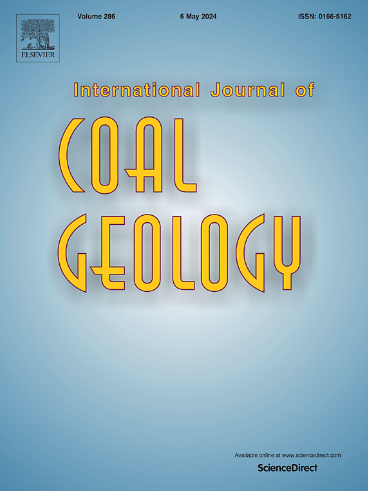利用 FIB-SEM 对细粒岩石孔隙网络进行定量表征的改进型卷积结构
IF 5.6
2区 工程技术
Q2 ENERGY & FUELS
引用次数: 0
摘要
聚焦离子束扫描电子显微镜(FIB-SEM)是分析和了解页岩和其他细粒地层中复杂孔隙网络的最先进成像技术之一。然而,FIB-SEM 成像往往耗时耗力,并可能导致与孔隙分析相关的解释出现偏差。最近,用于图像分割的 U-Net 或其变体已被用于以更高分辨率捕捉微观孔隙。基于 "传统 "编码器-解码器的方法往往不能很好地检测到非常精细的微观孔隙。本研究提出了一种改进的卷积结构,用于利用 FIB-SEM 自动分析页岩储层中的孔隙结构。它通过应用超完全卷积结构 KiU-Net,在输入的 FIB-SEM 图像中精确定义孔隙边缘,从而捕捉极细微尺度的微观孔隙。KiU-Net 通过提高模型对输入图像中细微孔隙的敏感度来学习低级和高级特征。本研究的目的是通过分析不同特征的页岩层来展示 KiU-Net 的能力。结果表明,KiU-Net 在预测龙马溪地层、牛池塘地层、青山口地层、黔江地层、延长地层(中国)、巴肯页岩(加拿大)和煤储层(中国)中的纳米孔隙时,比其他方法更准确、更高效。此外,与注意力 U-Net 技术相比,KiU-Net 还具有所需参数更少、收敛性更强的优势。KiU-Net 通过捕捉具有精确边缘的极细尺度微观孔隙,解决了边缘阈值自动处理(ETAP)方法所面临的挑战。这项研究进一步提高了页岩中孔隙分析的准确性和效率,从而为了解页岩储层质量提供了一种更好的方法,有望提高此类地层的石油采收率。本文章由计算机程序翻译,如有差异,请以英文原文为准。
An improved convolutional architecture for quantitative characterization of pore networks in fine-grained rocks using FIB-SEM
Focused ion beam scanning electron microscope (FIB-SEM) is one of the most advanced imaging techniques for analyzing and understanding complex pore networks in shale and other fine-grained formations. However, FIB-SEM imaging tends to be time-consuming and labor-intensive and can result in biased interpretations associated with pore analysis. Recently, U-Net or its variants for image segmentation have been applied to capture microscopic pores at higher resolutions. The ‘traditional’ encoder-decoder-based approaches tend to detect very fine-scale microscopic pores poorly. This study presents an improved convolutional architecture for automatically analyzing pore structures in shale reservoirs using FIB-SEM. It does so by applying an overcomplete convolutional architecture, KiU-Net, to capture very fine-scale microscopic pores by accurately defining their edges in the input FIB-SEM images. The KiU-Net learns low and high-level features by making the model more sensitive to fine-scale microscopic pores in the input images. The purpose of this study is to demonstrate KiU-Net's capabilities by analyzing different shale formations with varying characteristics. The results indicate that KiU-Net is more accurate and efficient than other methods in predicting nanopores in the Longmaxi, Niutitang, Qingshankou, Qianjiang, and Yanchang Formations (China), Bakken shale (Canada), and coal reservoirs (China). Furthermore, KiU-Net demonstrated the advantage of requiring fewer parameters and achieving super convergence compared to the Attention U-Net technique. KiU-Net addresses the challenges of the Edge-Threshold Automatic Processing (ETAP) methods by capturing very fine-scale microscopic pores with accurate edges. This study further enhances the accuracy and efficiency of pore analysis in shales, thereby offering an improved method for understanding shale reservoir quality with the potential to improve petroleum recovery from such formations.
求助全文
通过发布文献求助,成功后即可免费获取论文全文。
去求助
来源期刊

International Journal of Coal Geology
工程技术-地球科学综合
CiteScore
11.00
自引率
14.30%
发文量
145
审稿时长
38 days
期刊介绍:
The International Journal of Coal Geology deals with fundamental and applied aspects of the geology and petrology of coal, oil/gas source rocks and shale gas resources. The journal aims to advance the exploration, exploitation and utilization of these resources, and to stimulate environmental awareness as well as advancement of engineering for effective resource management.
 求助内容:
求助内容: 应助结果提醒方式:
应助结果提醒方式:


